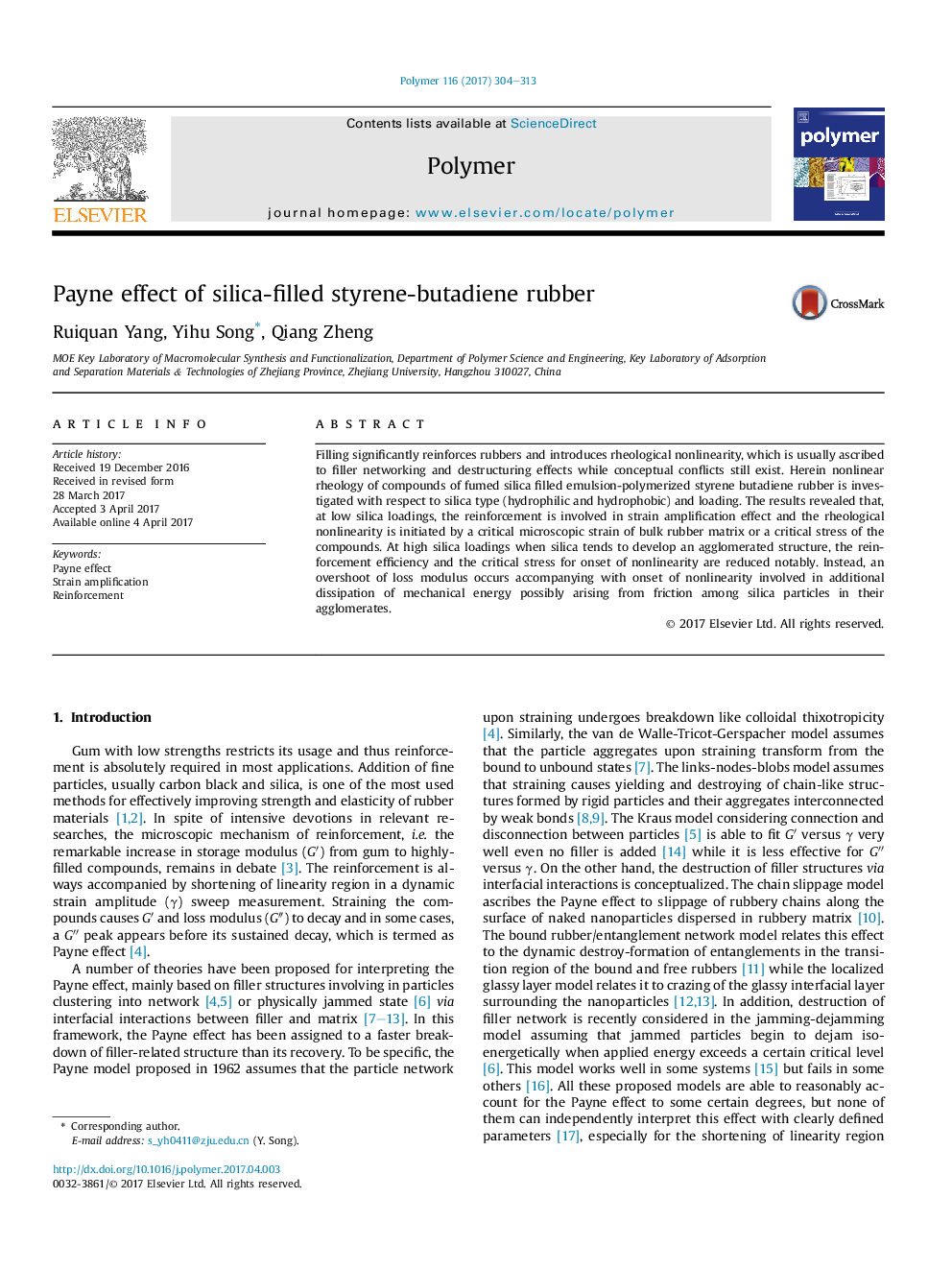| Article ID | Journal | Published Year | Pages | File Type |
|---|---|---|---|---|
| 5178205 | Polymer | 2017 | 10 Pages |
â¢Strain amplification effect is responsible for reinforcement of rubbery compounds.â¢Molecular disentanglement is mainly responsible for Payne effect.â¢Payne effect of low-filling compounds occurs at iso-stress condition.â¢Interparticle friction is the main reason of Gâ³ overshoot.
Filling significantly reinforces rubbers and introduces rheological nonlinearity, which is usually ascribed to filler networking and destructuring effects while conceptual conflicts still exist. Herein nonlinear rheology of compounds of fumed silica filled emulsion-polymerized styrene butadiene rubber is investigated with respect to silica type (hydrophilic and hydrophobic) and loading. The results revealed that, at low silica loadings, the reinforcement is involved in strain amplification effect and the rheological nonlinearity is initiated by a critical microscopic strain of bulk rubber matrix or a critical stress of the compounds. At high silica loadings when silica tends to develop an agglomerated structure, the reinforcement efficiency and the critical stress for onset of nonlinearity are reduced notably. Instead, an overshoot of loss modulus occurs accompanying with onset of nonlinearity involved in additional dissipation of mechanical energy possibly arising from friction among silica particles in their agglomerates.
Graphical abstractPayne effect of low-filled ESBR/FS compounds has an iso-stress character, which originates from stress-induced disentanglement of ESBR chains and well explains the reinforcement in linearity region. The breakdown of agglomerates in high-filled compounds decreases critical stress of Payne effect as a result of rigidity and fragility of the agglomerates and yields an overshoot of loss modulus as a result of interparticle friction.Download high-res image (167KB)Download full-size image
